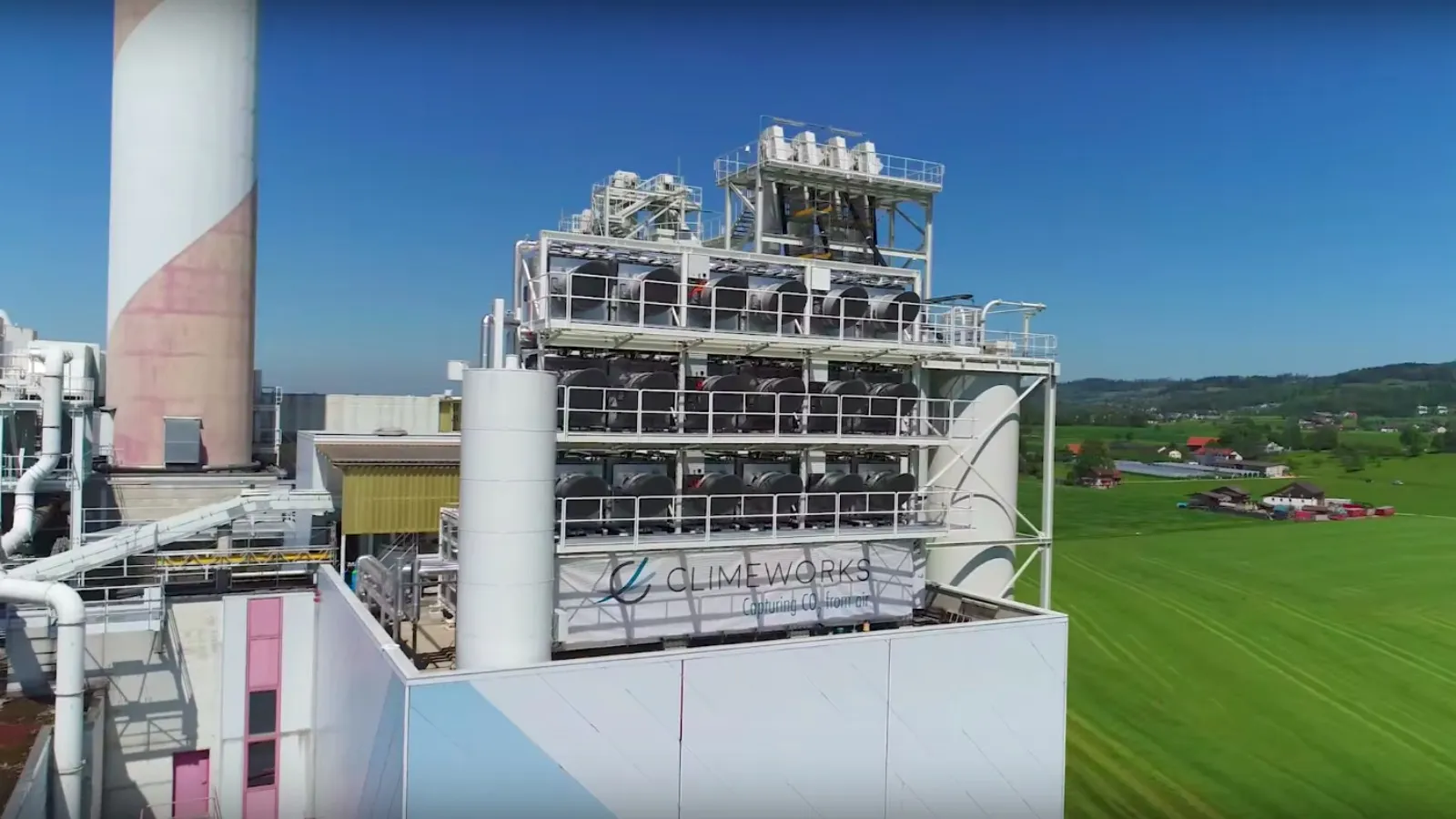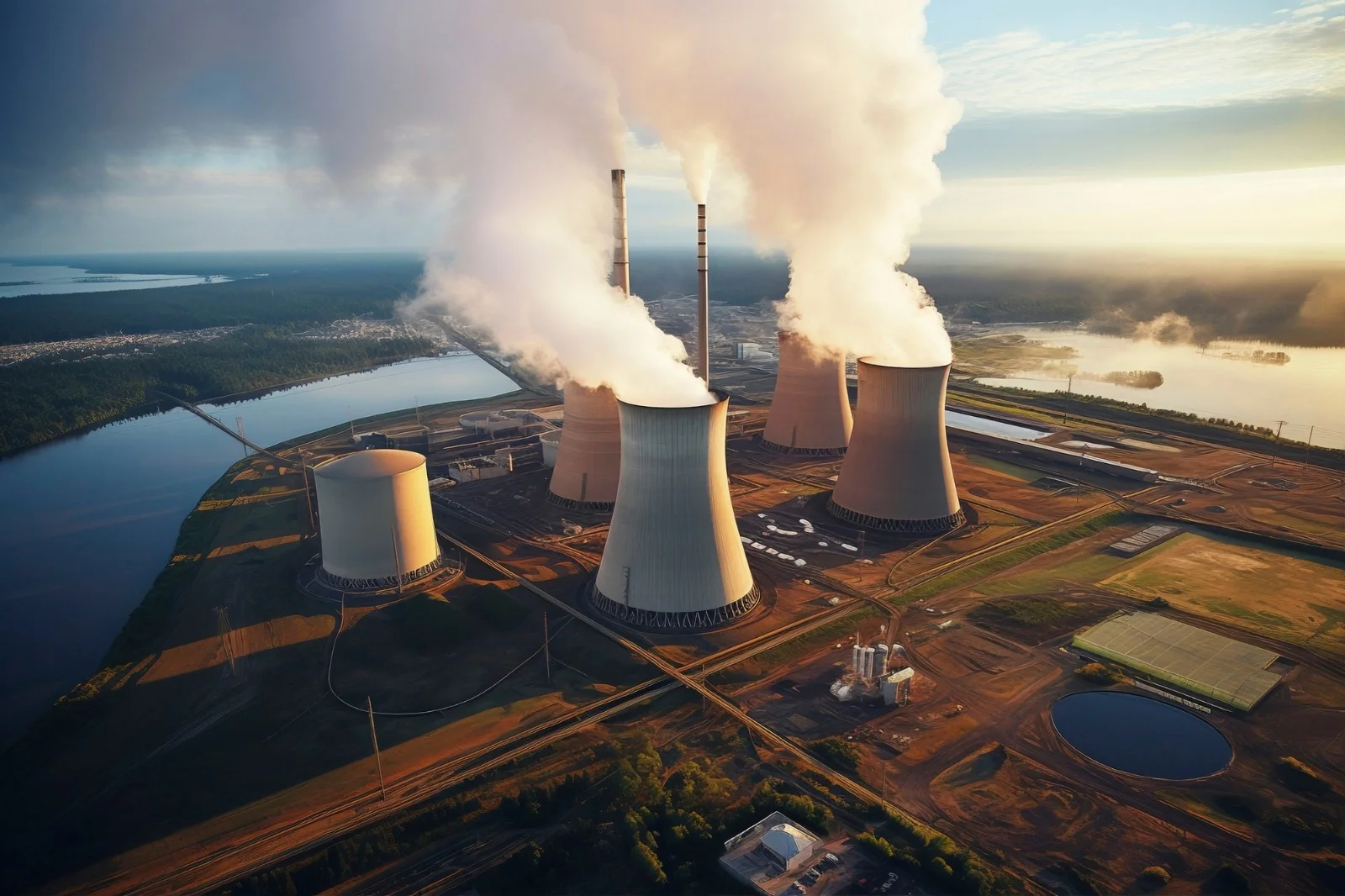Table of Contents
The future of heavy industries demands sustainability along with optimal profitability. This creates a compulsion to explore the revolutionary realm of carbon sequestration and how lucrative it is for the industrial process.
The basic advent of carbon capture and sequestration CCS was an initiative to control the impact of Carbon emission on the environment. However, it opened up a plethora of possibilities for profitability in the heavy industries, especially the Oil and gas sector.
With the rise in unachievable carbon neutrality targets set by regulating bodies, adopting carbon capture and sequestration technology becomes necessary. The essence lies in transforming environmental responsibility into profitable sustainability. By effectively implementing CCUS, heavy industries, especially O&G, can meet their carbon emission curbing goals while unlocking new revenue streams.

Understanding Carbon Capture and Sequestration CCS
Carbon capture and sequestration stands as a pivotal solution in meeting the emission reduction targets set by the governments. This is a measure to curb the effects of global warming and climate change. Using this technology, heavy industries can comply with the carbon credits assigned to them.
It involves capturing carbon dioxide emissions produced by various industries, preventing their release into the atmosphere. This process plays a crucial role in helping the industries emerge as more carbon conscious entities. It also
Carbon Sequestration Methods
The different Carbon sequestration methods include afforestation, reforestation, soil carbon sequestration, direct air capture, and ocean-based techniques.
These techniques aim to capture and store carbon dioxide, mitigating its impact on climate change. Subsequently, it also opens up multiple doors to a profitably sustainable industrial process.
Find CCUS Projects and Tenders Across the WorldGet Started Now!
CCS employs various methods to capture and store carbon dioxide, including post-combustion capture, pre-combustion capture, and oxyfuel combustion. The carbon captured by this technology is often stored in a geologic formation like depleted oil and gas fields, deep saline formations, and unmineable coal seams.
Post-combustion captures carbon dioxide emissions after the combustion of fossil fuel, pre-combustion capture it before the combustion process, and oxyfuel combustion burns fossil fuel in oxygen to produce a concentrated stream of carbon dioxide for capture.
Role of Heavy Industries
Carbon emission is an integral part of the industrial process of heavy industries like the Oil and Gas sector. Sequentially, the importance of Carbon Sequestration is undeniable in this sector. Heavy industries can easily meet the stringent carbon negativity targets by implementing carbon sequestration technologies. This can finally count as a big contribution to global efforts to combat climate change. This aligns with environmental responsibilities and positions these industries as the flagbearers of sustainable practices.
Sustainability is the basic foundation of the long term profitability of industries. As global regulations tighten and consumer preferences shift towards eco-conscious choices, industries embracing sustainability measures of carbon removal and carbon storage, gain a competitive edge. Beyond regulatory compliance, integrating sustainable practices fosters positive corporate images, attracts environmentally conscious investors, and ensures operational resilience in a rapidly changing market.
Understanding how to sequester carbon and implementing strategies is not just an environmental responsibility but a strategic move toward securing long-term profitability for heavy industries. By actively participating in the global initiative of reduced carbon emission, these industries pave the way for a sustainable and economically viable future.
How Can Carbon Sequestration Benefit Heavy Industries?
Heavy industries, especially the power plant and Oil & Gas sector, face unique challenges. The major one is, meeting the staunch carbon management goals. With global pressure to reduce atmospheric carbon dioxide and curtail the effects of greenhouse gas, O&G companies are compelled to find sustainable solutions.

Enhancing Profitability with CCUS
Carbon Capture, Utilization, and Storage (CCUS) emerges as a game-changer for O&G. By capturing CO2 emission during extraction and refining processes, CCUS not only reduces the carbon footprint but also opens avenues for enhanced profitability.
Case Studies and Success Stories
Several heavy industries have reaped benefits from carbon capture and sequestration CCS implementation. For instance, by utilizing carbon dioxide capture in enhanced oil recovery (EOR), companies have increased oil yields while minimizing their environmental impact. These success stories showcase the dual advantage of sustainability and economic growth.
In the United States, a leading corporation adopted CCUS, significantly lowering the emission from their production facilities. A groundbreaking UCLA technology, in collaboration with NETL and DOE's FECM, claimed the top prize in the global NRG COSIA Carbon XPRIZE competition. The innovation involves an eco-friendly method that incorporates carbon dioxide directly captured from the power plant and industrial facilities into eco-friendly concretes, offering a sustainable approach to reducing emission.
Carbon sequestration, particularly through CCUS, is a strategic move for heavy industries like O&G. Beyond meeting environmental mandates, it unlocks a new era of profitability. These industries can now navigate the challenges unique to their sector, ensuring a sustainable and economically viable future.
Also Read: Global Top 10 Carbon Capture Companies [2024]
Market Insights
The global Carbon Capture, Utilization, and Storage (CCUS) market, plays a crucial role in the Oil and Gas (O&G) industry. CCUS technology mitigates greenhouse gas emissions by capturing carbon dioxide produced during fossil fuel combustion. This process not only enhances environmental sustainability but also aligns with the industry's commitment to reducing its carbon footprint and opens the door to a sustainably profitable future.
To gain a comprehensive understanding of the evolving CCUS landscape in the O&G sector, exploring detailed market insights becomes useful. Our recent report on the global Carbon Sequestration market offers an in-depth analysis, covering market trends, key players, and future projections. This report serves as a valuable tool for industry stakeholders, providing strategic information to navigate the dynamic CCUS market. Whether you are an investor, policymaker, or industry professional, this report equips you with the knowledge to make informed decisions in the rapidly evolving energy landscape.
In the dynamic landscape of environmental sustainability, monitoring Carbon Capture, Utilization, and Storage (CCUS) projects globally has become as important as it gets, especially within the Oil and Gas (O&G) industry.
Tracking these projects offers a real-time glimpse into the progress and impact of carbon capture initiatives, providing invaluable insights for stakeholders and decision-makers alike.
Understanding the significance of global CCUS projects lies in their potential to reshape the energy sector by curbing carbon emissions. These initiatives not only contribute to climate change mitigation but also play a pivotal role in aligning industries with international sustainability goals. By monitoring CCUS projects worldwide, one gains a holistic perspective on the advancements, challenges, and success stories within the realm of carbon capture technology.
Embark on a journey to explore the global CCUS landscape, track projects in real time, and contribute to a sustainable future. Dive into the database now: [Link to the CCUS Database].
Find CCUS Projects and Tenders Across the WorldGet Started Now!
Challenges of Implementing Carbon Sequestration
Implementing Carbon Capture, Utilization, and Storage (CCUS) in the Oil and Gas (O&G) industry presents a unique set of challenges, ranging from regulatory complexities to economic and operational hurdles. Overcoming these obstacles requires a strategic approach that considers the intricate nature of the industry and the global push towards sustainable practices.

Regulatory Challenges
Implementing Carbon Sequestration is faced with the very first challenge of keeping track of the regulatory framework. Regulatory frameworks vary across regions, creating a complex environment for O&G companies. Compliance with stringent emission standards and securing necessary permits pose challenges that demand careful consideration.
Companies need to engage in collaborative efforts with the governing bodies. O&G companies should actively participate in shaping policies and standards, advocating for a conducive regulatory environment. Establishing transparent communication channels with authorities helps streamline the approval process, fostering a cooperative relationship.
Economic Hurdles
The financial implications of CCUS projects often deter it's widespread adoption in the O&G sector. High upfront costs, uncertain returns on investment, and market fluctuations pose significant economic challenges for industry players.
Implementing financial incentives, such as tax credits or subsidies, can stimulate the adoption of carbon storage measures. Collaboration with governments and financial institutions to create favorable funding mechanisms helps alleviate financial burdens. Demonstrating the long-term economic benefits and potential for revenue generation through carbon capture and carbon storage initiatives is essential for garnering industry support.
Operational Complexities
Integration of Carbon sequestration technology into existing O&G operations requires substantial modifications and poses operational challenges. Ensuring seamless integration without compromising efficiency or safety standards is indeed a challenge poser.
Investing in research and development to enhance the compatibility of CCUS technologies with existing infrastructure is crucial. Implementing pilot projects allows companies to test and optimize systems before full-scale deployment, mitigating operational risks. Training personnel to manage and maintain CCUS technologies ensures a smooth transition and operational efficiency.
Global Collaboration
CCUS projects often involve cross-border operations, necessitating international cooperation. Harmonizing standards, sharing best practices, and addressing global challenges collectively are essential for the success of CCUS on a broader scale.
Engaging in international collaborations and partnerships fosters knowledge exchange and collective problem-solving. Participating in global initiatives and forums facilitates the development of standardized practices, reducing complexities associated with varying regulations and ensuring a smoother implementation process.
Addressing the challenges of implementing CCUS in the O&G industry requires a multifaceted strategy that incorporates regulatory advocacy, financial incentives, operational optimization, and global collaboration. By adopting these strategic measures, the industry can pave the way for widespread adoption of carbon capture technologies, contributing significantly to global efforts in mitigating climate change.
Policies That Can Support Carbon Capture and Sequestration Implementationration implementation
Governments can employ various policies to incentivize the deployment of carbon sequestration methods, particularly within the Oil and Gas (O&G) industry, ensuring a balance between environmental sustainability and the profitability of the sector.

Financial Incentives
Offering financial incentives, such as tax credits, subsidies, or grants, can motivate O&G companies to invest in carbon sequestration technologies. These incentives can help offset the initial high costs associated with implementing carbon dioxide capture and storage methods, making the adoption more financially attractive.
Regulatory Frameworks
Establishing clear and supportive regulatory frameworks is crucial. Governments can create standards that reward O&G companies for implementing carbon sequestration methods, potentially providing regulatory credits or exemptions. This encourages compliance with environmental goals while fostering innovation within the industry.
Cap-and-Trade Systems
Implementing cap-and-trade systems sets a limit on the total carbon emission and allows O&G companies to trade emission allowances. This market-based approach provides financial flexibility, rewarding companies that invest in carbon sequestration and penalizing those exceeding emission limits, creating a profit-driven incentive for sustainable practices.
Carbon Pricing
Introducing a carbon pricing mechanism, such as a carbon tax, places a monetary value on carbon emissions. O&G companies can benefit financially by reducing emissions through carbon sequestration methods, avoiding higher taxes, and potentially gaining a competitive edge in the market.
Public-Private Partnerships
Encouraging collaboration between governments and private entities through public-private partnerships can facilitate the deployment of carbon sequestration technologies. Governments can provide funding, resources, or research support, fostering innovation within the O&G industry while ensuring environmental responsibility.
Technology Development Support
Governments can invest in research and development initiatives focused on advancing carbon sequestration technologies. This support can lead to the creation of more efficient and cost-effective methods, making it more enticing for O&G companies to adopt these technologies.
By implementing a combination of these policies, governments can strike a balance between environmental goals and the profitability of the O&G industry. Such measures not only encourage the deployment of carbon sequestration methods but also position the industry as a key player in the global transition toward a more sustainable and low-carbon future.
The Global Trend of Carbon Sequestration
The Carbon Capture, Utilization, and Storage (CCUS) market analysis reveals a dynamic landscape across key regions, namely North America, Europe, Asia-Pacific, and LAMEA. These regions exhibit distinct trends and policies, reflecting a concerted global effort to harness CCUS technologies for sustainable development.

North America
In North America, particularly in the United States and Canada, there is a palpable commitment to CCUS as a cornerstone of sustainable profitability strategies. The market analysis indicates substantial investments, with the Bipartisan Infrastructure Bill in the U.S. allocating a significant $8 billion to bolster CCUS projects. Canada, through its Strategic Innovation Fund, underscores a commitment to reducing greenhouse gas emissions, providing a robust foundation for CCUS advancements in the region.
Europe
Europe emerges as a frontrunner in embracing CCUS technologies, aligning with the ambitious goals outlined in the European Green Deal. The report highlights the EU's Innovation Fund, boasting a €10 billion budget, as a key driver for CCUS initiatives. The focus on carbon capture is integrated into broader climate plans, with the European Commission's 2030 Climate Target Plan emphasizing increased investment in renewable energy and CCUS to steer the continent towards sustainability.
Asia-Pacific
In the Asia-Pacific region, countries actively explore CCUS opportunities to support sustainable development. The market analysis underscores a growing awareness of the importance of carbon capture technologies in achieving environmental goals. As economies in the region continue to expand, there is a notable shift towards integrating CCUS into national policies, reflecting a proactive stance to address carbon emissions and promote green practices.
LAMEA
The analysis of the CCUS market in the LAMEA region (Latin America, Middle East, and Africa) unveils a diverse landscape. While specific policies may vary among countries, there is a shared recognition of the significance of CCUS in mitigating climate change. Governments in the Middle East, for instance, are strategically investing in CCUS projects to reduce carbon footprints from their extensive oil and gas operations, demonstrating a commitment to sustainability.
The CCUS market analysis across North America, Europe, Asia-Pacific, and LAMEA highlights a global shift towards embracing carbon capture technologies. Governments and industries are actively shaping policies and making substantial investments, signaling a collective commitment to addressing climate change and fostering profitable sustainability. As these regions navigate unique challenges and opportunities, the adoption of Carbon sequestration emerges as a common thread in the global pursuit of a carbon neutral future. For more detailed insights, refer to the complete report here.
Also Read: How Does CCUS Technology Help in CO2 Emissions ...
Discover CCUS projects with ease
Are you looking for a platform that gives you reliable, high-quality, and timely project insights for CCUS projects across the world?
Discover the Global Project Tracking (GPT) platform by Blackridge Research, designed to provide you with the most recent CCUS Projects and Tenders around the world better and faster across various stages of development:
- Upcoming projects
- Tender Notices
- Contract award announcements
- Projects in progress or under construction
- Successfully completed projects.
The user-friendly interface helps you obtain early-stage awareness of projects and find the right business opportunity quickly.
Each project will have all the essential details, such as scope, capacity, CapEx, status, project description, companies involved, funding information, location, periodic updates, important event dates like construction start date, commissioning dates, and key contact information of project owners and stakeholders.
The database is a vital resource for a wide range of entities, including energy companies, industrial manufacturers, technology providers, investment firms, government agencies, regulatory bodies, research institutions, environmental consulting firms, utilities, and grid operators, renewable energy developers, and carbon offset market participants.
Book a Free demo to learn more about the global CCUS projects database and how we can help you achieve your goals.







Leave a Comment
We love hearing from our readers and value your feedback. If you have any questions or comments about our content, feel free to leave a comment below.
We read every comment and do our best to respond to them all.